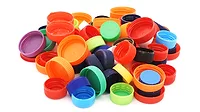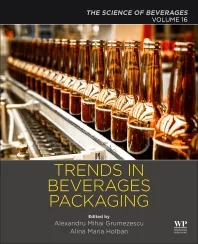Consumer trends influence caps, closures market
Safety, sustainability important features for packaging materials

To create repeat customers, brands must consistently deliver on their product promises. As beverage SKU proliferation continues, manufacturers and their caps and closures suppliers must stay up-to-date with the latest market and consumer trends in order to do so. According to Cleveland-based The Freedonia Group’s 2017 “Global Plastic Caps & Closures by Product, Market and Region” report, beverage caps and closures accounted for 66 percent of the overall global caps and closures market in 2016, and will continue to account for a majority of the demand in the future.
However, the market research firm notes that several major caps and closures applications for beer and carbonated soft drinks will lag, while bottled water applications will continue to grow.
Global demand for caps and closures is projected to increase 3.6 percent a year to nearly 2.4 trillion units, valued at $63 billion, by 2021, the report states. Value gains will be driven by growing consumer preferences for closures that offer convenience and ease-of-use advantages, as well as safety features, it adds.
The healthy-hydration trend specifically is driving the caps and closures market, experts say. “There is a substantial market emerging that is best described as healthy hydration,” says C.J. Rapp, chief executive officer at Karma Culture LLC, Pittsford, N.Y. “It is bigger than a fitness beverage or low-calorie offering. Consumers want low-to-no calories. They want the beverage to support a healthy lifestyle; and water by itself falls short on functional attributes. So what the consumer really wants is water with benefits.”
A.J. Miller, marketing manager for Downers Grove, Ill.-based Silgan Closures, echoes similar thoughts on the wellness trends that are impacting the caps and closures market. “Consumers’ desire for healthy/wellness products has increased the use of certain processes, which has increased the use of certain materials,” he says.
Miller points to the high-pressure processing (HPP) trend as one of those processes. “Products like fresh- pressed juice use HPP,” he says. “HPP keeps a lot of the nutrients intact that would not survive a hot-fill process. By using HPP, the consumer receives more nutrients in their beverage.
“HPP puts products under very high pressure, which requires packaging that will give under pressure then return to its original shape,” he continues. “As a result, plastic bottles with plastic closures or film with plastic closures are broadly used with HPP.”
Another trend impacting beverage closures is eCommerce, Miller says. Lightweight packaging for eCommerce is preferred because of less costly shipping, and the package still is able to hold up against the abuse a package endures during the shipping process, he adds.
Because Silgan recognizes how eCommerce is impacting beverage closures, the company uses lighter-weight packaging. “In addition to ‘lightweighting’ or reducing material from our plastic closures, Silgan Closures has designed a metal closure that will hold a seal on a plastic jar,” Miller says.
Augustin de Tilly, global business development development for beverages at Aptar Food + Beverage, Crystal Lake, Ill., notes the consumer demand for convenience and functionality from packaging as a prominent trend in the caps and closures market. “We have seen a continued acceleration in the conversion of non-functional packaging into functional formats such as dispensing spouts on pouches, dispensing closures and sports closures,” he says.
“As a result, the demand for convenience is increasing,” he continues. “When designing new products, our aim is to make the life ‘easier’ for the consumer when they are experiencing the product.”
Conversely, caps and closures manufacturers also must tend to their own trend needs. “The caps and closures market is not only influenced by consumer trends, but also by the needs of bottlers and brand owners,” says Clint Rush, director of marketing and business development for Indianapolis-based Closure Systems International (CSI).
“CSI continues to have six overarching trend categories against which most of our innovation initiatives are aligned to satisfy consumers, bottlers and brand owners alike,” he says.
The following are trends recognized by CSI:
- Wellness: closure suppliers should deliver packaging sealing solutions for healthy beverages and closures that enhance package safety and security.
- Consumer convenience and functionality: a trend that warrants package development focus in order to increase brand marketability and to deliver consumer value.
- Brand promotion and decoration: helps brand owners communicate relevance, drives sales and brand loyalty, and generates shelf differentiation.
- Product integrity and preservation: it is critical that consumers’ beverages taste fresh, authentic and consistently live up to expectations.
- Cost reduction: one of the most critical components facing consumer packaged goods companies.
- Environmental stewardship: requires companies to focus on source reduction, recycling and carbon footprint emissions to help customers meet their financial and sustainability goals.
Safe and sustainable
As the health-and-wellness trend flourishes, beverage suppliers and manufacturers also recognize the importance of using materials that protect what’s inside.
“It is believed that packages and closures will need to provide secure sealing on many pack types and sizes containing healthy beverages,” CSI’s Rush says. “This includes plastic, [glass and aluminum] bottles, pouches, cartons and more. Packaging and closure companies such as CSI will need to help brand owners protect the integrity of their natural products while also helping them effectively communicate their wellness benefits and differentiating their packaging from the sea of other competing products on the store shelves, in vending machines, at venues and in retailer coolers around the world.”
Karma Culture also notes the importance of protecting what’s inside the packaging. “[There’s an] absolute need for a beverage to deliver on its promise,” Rapp says. “There are science-based studies that substantiate probiotics and vitamins deteriorate in water, so a pre-mixed ready-to-drink beverage with vitamins or probiotics has difficulty with stability and meeting its stated claims.”
Recognizing this obstacle, Karma Culture seized the opportunity by creating the Karma Push Cap. “The Karma Push Cap assures optimal potency because it fully protects the active ingredients.” Rapp says.
While protecting what’s inside, the Karma Push Cap also showcases sustainable benefits. “[It] is made of low-density polyethylene … the very same material as a milk jug,” Rapp says. “It is fully [Federal Drug Administration] compliant and recyclable.”
Similarly, Silgan Closures designs its caps and closures with an environmental ethos in mind. “Sustainability has increased the demand for aluminum bottles and closures,” Miller says. “Aluminum has a high scrap value compared to other recycled materials. As a result, aluminum is one of the most widely accepted materials at recycling plants.
“Beverage manufacturers use aluminum closures and packaging so they can position their products as sustainable,” he continues. “That is being done with water, alcoholic beverages, kombucha and coffee drinks.”
As mentioned above, not only is lightweighting helpful in keeping delivery costs down, but the practice also provides sustainability. “Caps and closures have definitely gotten lighter in weight, which address the [aforementioned] cost reduction and environmental trends,” CSI’s Rush says. “CSI and most closure companies have focused and continue to focus on lightweighting.
“There is a point to when a closure design for a given bottle finish is as light as it is going to get,” he continues. “We are now researching more environmentally friendly materials, including bio-based resins and recycled content. CSI has made it our mission to combine closure/bottle finish lightweighting with advanced performance. This includes source reduction as well as reduced energy consumption in our plants and for our customers.”
Aptar also recognizes the importance of sustainable packaging materials. “Brands are pursuing more sustainable packaging solutions that help them achieve their sustainability goals, as well as provide environmentally-focused consumers with solutions that fit their lifestyles,” de Tilly says.
“Plastic reduction remains a target for all [consumer packaged goods] (CPGs), so we continue to deliver on lightweight solutions while also balancing the product performance, especially considering the challenging requirements of the eCommerce supply chain,” he adds.
A pop of color
Just as with any type of primary packaging, caps and closures can help beverage products stand out on store shelves, experts note. “Closures can pop on shelves with attractive artwork and printing,” Silgan Closures’ Miller says. “Bright color and unique knurl patterns are also eye-catching.”
Likewise, CSI’s Rush agrees on the prominence closures can bring to packaging. “The closure should be an integral part of the packaging design,” he says. “The cap, color, shape, feel, graphics and printing should communicate the brand’s identity and provide differentiation from competitive products on the store shelf.
“The material used greatly impacts, not only the aesthetics of the closure design, but also the functionality,” he continues. “This is taken into consideration during the closure development phase.”
For example, CSI manufactures custom Carafe Closures that are ideal for differentiating dairy, juice and other non-carbonated beverages, Rush explains.
As market innovation continues, plastic caps and closures will maintain their dominance. The Freedonia Group predicts plastic caps and closures to increase their already large share of demand, primarily due to the shift in container mix generally favoring plastic over glass and metal, the report says.
Going forward, the market for caps and closures only will get stronger, experts say. “Previously, consumers’ desired beverage packaging that was convenient and easy-to-open,” Silgan’s Miller says. “We are seeing an increase in consumer interest for security/tamper evidence [solutions].
“Tethered closures are of interest as an option to reduce closure waste,” he continues. “The idea is if closures are tethered to the bottle, they have a greater ability to make it into recycling streams.”
As diverse demographics and changing lifestyle trends appear, it will provide innovation opportunities for the beverage and closure industry, CSI’s Rush says.
“There continues to be a need for enhanced environmental sustainability performance through packaging,” he continues. “Closures and capping solutions need to help bottlers improve their operational efficiency.”
As Karma Culture’s Rapp puts it, “This is only the beginning.” BI
Looking for a reprint of this article?
From high-res PDFs to custom plaques, order your copy today!





